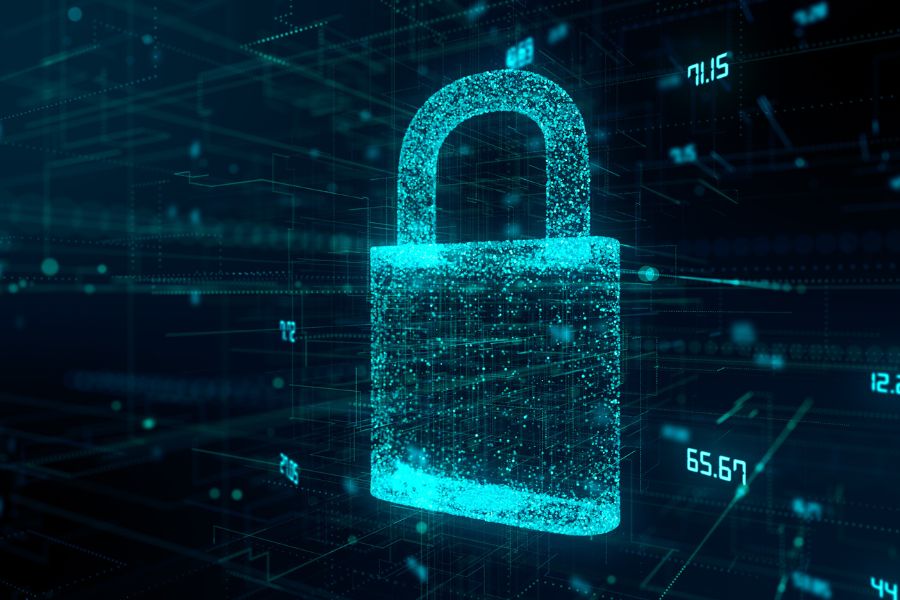Zero Trust Security: Why it’s Critical in Today’s Cyber Landscape?
September 24, 2023, 6 min read
Negative trust Cybersecurity treats all users and devices as suspicious, demanding extra verification. Organizations adopt this approach to avoid blind trust post-network access. To prevent unauthorized access to critical information and resources, a zero trust security model treats every user and device as though they were connecting from an untrusted network. This method reduces vulnerability to insider threats and advanced attacks from the outside. Its implementation commonly involves using several technologies, including multi-factor authentication, network segmentation, and access control.
Understanding the Zero Trust Security Model
Traditional network security measures typically assume trust in individuals and devices within an organization’s network, prioritizing external threats. This highlights the critical importance of cybersecurity. In today’s interconnected and rapidly-evolving digital landscape, however, this notion can no longer hold.
When it comes to securing sensitive data and systems in the modern digital environment, a zero-trust cybersecurity network is essential. It’s a more all-encompassing and adaptable kind of security that aids businesses in keeping up with ever-changing threats and retaining the confidence of their customers and business associates.
How Zero Trust Security Protects Against Advanced Threats
Zero trust enforces authentication, authorization, and validation before granting access to data, irrespective of network location. It eliminates the traditional network edge, accommodating various network setups.
Zero trust security architecture is a strategy for protecting digital assets in the context of the ongoing digital trust trend & digital revolution. It’s a one-of-a-kind answer to the ransomware, cloud migration, and remote worker security issues that plague modern businesses. Even though many different vendors have attempted to come up with their definitions of Zero Trust, several standards from legitimate bodies can assist you in aligning Zero Trust with your operations.
Zero Trust Security and Remote Workforce
IT and security departments have to move quickly to meet the sudden demand for enabling remote work on a vast scale. They had to make do with what they had available when the pandemic first struck. Generally, this would consist of a Virtual Private Network (VPN) and some form of anti-malware/antivirus software. But, as cybercriminals began targeting the new openings afforded by remote employment, businesses realized they needed even more safeguards. When the attack surface expanded, a unified strategy for protecting remote employees was required.
Most professionals in today’s economy conduct their job away from the office, taking confidential documents and data outside of the protected network. They also make extensive use of cloud-based SaaS applications. These advancements highlight the need for a secure remote work platform. Putting your finger in the dike in an attempt to patch security holes doesn’t work.
To secure flexible workforces, like remote work, a zero-trust endpoint security method is effective. It ensures continuous protection during app usage, in contrast to VPNs. As remote work becomes common, the flaw in traditional VPNs is evident—remote users can access all network resources through a single key. Industry leaders like Citrix have embraced zero trust to counter this.
Implementing a Zero Trust Security Framework
It will take time to fully implement Zero Trust. Most of the time, you can apply Zero Trust to preexisting infrastructure, but for a network to truly mature, it must embrace and integrate new skills and procedures.
Thankfully, there is room for the gradual development of a Zero Trust architecture. Adopting a Zero Trust security posture gradually might minimize risk because increased visibility allows the business to adjust to new threats as they appear. Adopt Zero Trust methodically, as part of a roadmap that evolves.
Your Zero Trust maturity model should span planning, basic, mid, and advanced cyber defense levels.
Understanding your network’s architecture, physical/virtual assets, subjects, and processes is crucial for ZTA migration. Missing this risks security gaps, particularly with ‘shadow IT.’
To achieve an ideal ZTA, a detailed audit of your network’s present state is essential.
Based on these major defensive pillars, the Cybersecurity and Infrastructure Security Agency (CISA) describes a Zero Trust Maturity Model that businesses can follow. It also notes that a well-developed ZTA framework includes governance or the process by which security strategy is controlled and directed.
The CISA model shows how gradually more emphasis is placed on each of these pillars until they are fully optimized. Companies can focus on a single pillar at a time, making incremental improvements in each area until they need to work together on all three. This methodology allows for a staged transition to Zero Trust, spreading out the associated expenses and workload.
Benefits of Zero Trust Security for Businesses
Precautions Critical Company Data and the Reputation of Your Brand
Prioritizing data security in digital transformation prevents multimillion losses, and upholds reputation.
Weak measures risk identity theft costs. Breaches deter consumers, affecting profits.
Zero Trust limits access to authorized users, curbing breaches’ extensive impact.
Increased Exposure
As the Zero Trust definition puts no faith in anyone, it’s up to you to determine whether or not your current security setup needs any additional measures.
All data and computing resources are safe, and only after a thorough authentication process are they made available to users. Once you have implemented comprehensive monitoring of your operations, you will have full insight into who is using your network and what they are accessing.
This provides you with specific information about the time, place, and application associated with each request.
Also, your security system as a whole aid in the identification of suspicious behaviors and records all actions
Safeguards Teleworkers Against Danger
The abrupt transition to the remote working ecosystem is one of the greatest issues IT firms face today.
According to recent data, about 73% of IT professionals and C-level executives are concerned that the distributed workforce has introduced new vulnerabilities and a sudden surge in exposure.
By associating identities with authenticated users, apps, and devices, Zero Trust increases protection at the network’s edge.
Furthermore, diminishing the reliance on firewalls— which aren’t the strongest line of defense— ensures a robust security mechanism that enables people worldwide to access cloud-based data safely.
Overcoming the Challenges of Zero Trust Security
Although it has its limitations, zero trust is rapidly becoming the standard in cybersecurity. Fortunately, you have a lot of options for dealing with difficulties.
The first step in preparing for the move to zero trust is to take a comprehensive, multi-perspective look at your cybersecurity architecture. At the same time, it’s crucial that everyone involved recognizes the benefits of adopting a zero-trust strategy.
To keep productivity losses to a minimum, the micro-segmentation procedure should be implemented in stages. Microsegmentation is just one layer of defense; add more to make sure your network is secure from social engineering assaults, and don’t forget to train your workers.
After your zero-trust model has been fully established, it will need regular upkeep and periodic internal audits. Boosting confidence in limited data access for authorized individuals, partners, and customers ensures security. After all, that is supposed to be the result of zero-trust security.
Future Trends in Zero Trust Security
In-depth analysis of the global Zero Trust Security market, including the factors driving growth and the factors holding the market back. Competitive analysis, industry trends, product specifications, market segmentation studies, and company-wide studies are all part of the research process. The fundamental purpose of the study is to present crucial data analysis, information about the enterprise’s competitors, market potential, and growth rate.
Between 2022 and 2030, the zero-trust security market could grow at 17.50% CAGR, reaching USD 99.17 billion. Cloud’s rise drives the zero-trust paradigm, fostering market growth. Corporations have recently been employing computerized systems and networking technology, even though these systems are susceptible to attacks and security weakening.
Conclusion
Embracing the principles of zero trust security is no longer a nice to have; it’s a necessity for any modern company. Almost any place, at any time, and from any gadget can now serve as a workplace. Security flaws are still being exploited by threat actors due to siloed, patchwork solutions. Modern businesses require an all-inclusive zero trust security model approach. It ensures real-time transaction authentication, enforces minimal access, and swiftly addresses threats across the digital estate.




























